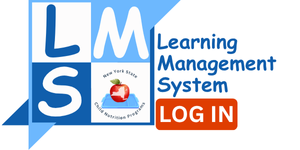 |
THE STATE EDUCATION DEPARTMENT / THE UNIVERSITY OF THE STATE OF NEW YORK / ALBANY, NY 12234 Office of P-20 Education Policy |
This is a reminder about updates to the school nutrition standards that will help schools encourage healthy choices that lead to healthy outcomes through the National School Lunch Program (NSLP) and the School Breakfast Program (SBP), which serve around 30 million and 15 million children every school day, respectively. While some changes to the meal pattern requirements are phased in through school year (SY) 2027-2028, several changes are effective July 1, 2025. Please refer to the timeline for more information on updated nutrition requirements in school meals.
The following NSLP and SBP meal pattern changes must be implemented by July 1, 2025:
- Added Sugars – Schools must meet the following product-based added sugar limits:
- Breakfast cereals must contain no more than 6 grams of added sugars per dry ounce (7 CFR 210.10(c)(2)(iii)(B)).
- Yogurt must contain no more than 12 grams of added sugars per 6 ounces (2 grams per ounce) (7 CFR 210.10(c)(2)(iv)(C)).
- Flavored milk must contain no more than 10 grams of added sugars per 8 fluid ounces, or 15 grams of added sugars per 12 fluid ounces for flavored milk sold as a competitive beverage for middle and high schools (7 CFR 210.10(d)(1)(iii)).
- NSLP Afterschool Snacks – Schools serving NSLP afterschool snacks to children in grades K-12 must serve the meal components and quantities found at 7 CFR 210.10(o)(2). Two highlights include:
- No more than half of the weekly fruit or vegetable offerings at NSLP snacks may be in the form of juice.
- At least 80 percent of the grains offered during the week for NSLP snacks must be whole grain-rich.
- Grain-based desserts, except for sweet crackers such as animal and graham crackers, do not contribute toward the grains requirement.
- Meal Modifications – Schools must accept medical statements from registered dietitians requesting meal modifications on behalf of students with disabilities in the school meal programs. Refer to 7 CFR 210.10(m)(1)(i) for more information.
- Substitution of Vegetables for Fruits at Breakfast
- Schools that choose to substitute vegetables for fruit at breakfast one day per school week may offer any vegetable, including a starchy vegetable.
- Schools that choose to substitute vegetables for fruit at breakfast on two or more days per week are required to offer vegetables from at least two different vegetable subgroups. Refer to SP 02-2025 and SP 13-2025 for more information.
- Sodium – The current sodium limits at breakfast and lunch will remain in place until July 1, 2027. Schools are encouraged to gradually work toward meeting the future sodium requirements (7 CFR 210.10(c)). Visit the following website for more information: https://www.fns.usda.gov/school-meals/nutrition-standards/sodium-limits.
- Buy American – Schools’ non-domestic food purchases must not exceed 10 percent of total annual commercial food costs as outlined in 7 CFR 210.21(d)(5)(ii)(A) and 7 CFR 220.16(d)(5)(ii)(A). As outlined in recent guidance, State agencies have the ability to approve a temporary accommodation to those school food authorities that demonstrate they cannot meet the threshold requirement for non-domestic purchases (see SP09-2025).
To assist schools in meeting the updated nutrition standards, the following resources are available from Team Nutrition and the Institute of Child Nutrition:
- Crediting Tip Sheets in Child Nutrition Programs
- Offering Meats and Meat Alternates at School Breakfast
- Reducing Added Sugars at School Breakfast
- Serving School Meals to Preschoolers
- The Whole Grain Resource for the National School Lunch and School Breakfast Programs
- Nutrition Standards for Added Sugars Fact Sheets
Please reach out to your Child Nutrition representative or email cn@nysed.gov with any questions.



